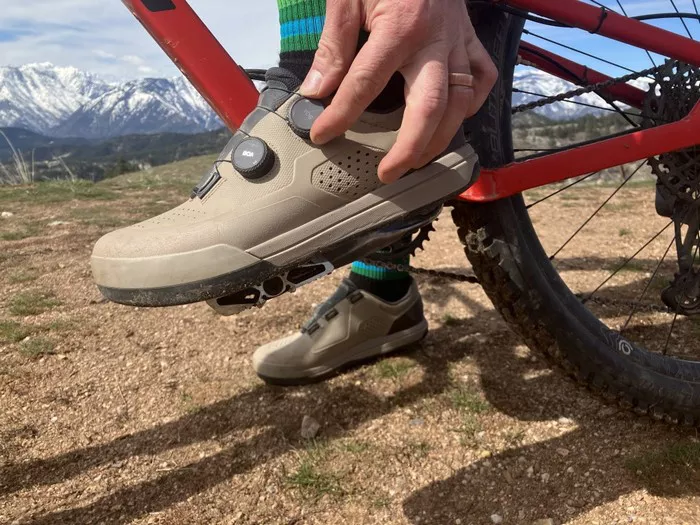Cycling is a sport enjoyed by millions around the world for its health benefits, accessibility, and the sheer joy of being outdoors. Whether you’re a casual rider or a seasoned cyclist, one question that often arises is whether investing in specialized cycling shoes is worth it. Bike shoes, designed with features like stiff soles and clipless pedal compatibility, promise improved performance and comfort. But are they truly essential, or just another gadget to drain your wallet? Let’s delve into the debate and weigh the pros and cons to determine if bike shoes are indeed worth the investment.
Enhanced Efficiency and Performance
One of the primary arguments in favor of bike shoes is their potential to enhance cycling efficiency and performance. Traditional athletic shoes, while comfortable and versatile, lack the specialized design needed for optimal power transfer. Bike shoes, on the other hand, feature stiff soles that minimize energy loss during each pedal stroke. This stiffness ensures that more of the force exerted by the cyclist is transferred directly to the pedals, resulting in increased speed and efficiency.
Moreover, bike shoes often come with cleats that allow for attachment to clipless pedals. Clipless pedal systems enable a secure connection between the cyclist’s feet and the bike, preventing slippage and ensuring a more consistent pedal stroke. This increased stability and control can lead to improved performance, especially during high-intensity rides or competitive events where every second counts.
Comfort and Support
Beyond performance benefits, bike shoes also offer superior comfort and support compared to standard athletic footwear. The snug fit and stiff sole of bike shoes provide excellent support for the foot, reducing the risk of discomfort and injury, particularly on long rides. Additionally, many bike shoes feature ventilation systems to keep the feet cool and dry, enhancing overall comfort during warm weather or intense workouts.
Furthermore, the ability to adjust the fit of bike shoes, often through features like BOA dials or Velcro straps, ensures a personalized and secure fit that minimizes foot movement within the shoe. This stability not only enhances comfort but also reduces the likelihood of hot spots, numbness, and other common issues associated with ill-fitting footwear.
Specialized Features for Different Disciplines
Another compelling argument for investing in bike shoes is the availability of specialized models tailored to different cycling disciplines. Whether you’re a road cyclist, mountain biker, or triathlete, there are bike shoes designed to meet the specific demands of your chosen sport.
For road cyclists, shoes with stiff carbon soles and lightweight construction are optimized for maximum power transfer and aerodynamics. Meanwhile, mountain bike shoes feature durable outsoles with aggressive tread patterns for improved grip and traction on off-road terrain. Triathlon-specific bike shoes prioritize quick transitions with features like wide entry points and easy-to-adjust closures.
Financial Considerations
While the benefits of bike shoes are undeniable, the investment required may give some cyclists pause. Quality bike shoes can be expensive, especially when factoring in the cost of additional accessories such as cleats and pedals. For budget-conscious riders, the prospect of spending a significant sum on specialized footwear may seem daunting, particularly if cycling is pursued as a recreational activity rather than a competitive endeavor.
However, it’s essential to consider the long-term value of bike shoes in relation to their durability and performance benefits. While the upfront cost may be higher than that of traditional athletic shoes, bike shoes are designed to withstand the rigors of regular use and offer lasting comfort and performance advantages. Moreover, the potential improvement in cycling efficiency and enjoyment can justify the initial investment for many riders.
Alternatives and Considerations
Despite the advantages of bike shoes, there are alternative options worth considering, especially for cyclists who may be hesitant to commit to specialized footwear. Some riders opt for flat pedals and grippy sneakers or mountain bike-specific shoes with flat soles, which offer a compromise between the benefits of bike shoes and the familiarity of traditional footwear. While these alternatives may not provide the same level of efficiency and performance as clipless pedal systems, they can still offer improved stability and comfort compared to regular athletic shoes.
Additionally, for cyclists who prioritize versatility and convenience, hybrid pedal systems like SPD pedals offer the option to use both clipless and flat pedals with compatible shoes. This versatility allows riders to enjoy the benefits of clipless pedals when desired while maintaining the flexibility to switch to flatpedals for casual rides or commuting.
Conclusion
In conclusion, the decision of whether bike shoes are worth it ultimately depends on individual preferences, goals, and budget. For serious cyclists seeking to maximize performance and comfort, investing in quality bike shoes can offer significant benefits in terms of efficiency, support, and specialized features tailored to their discipline. However, for casual riders or those on a tight budget, alternatives like flat pedals and grippy sneakers may provide a more accessible and practical option.
Ultimately, the key is to assess your cycling needs and priorities carefully and make an informed decision based on the specific advantages and trade-offs of bike shoes compared to alternative footwear options. Whether you choose to embrace clipless pedals and specialized bike shoes or opt for a more casual approach, the most important thing is to enjoy the ride and find what works best for you.

